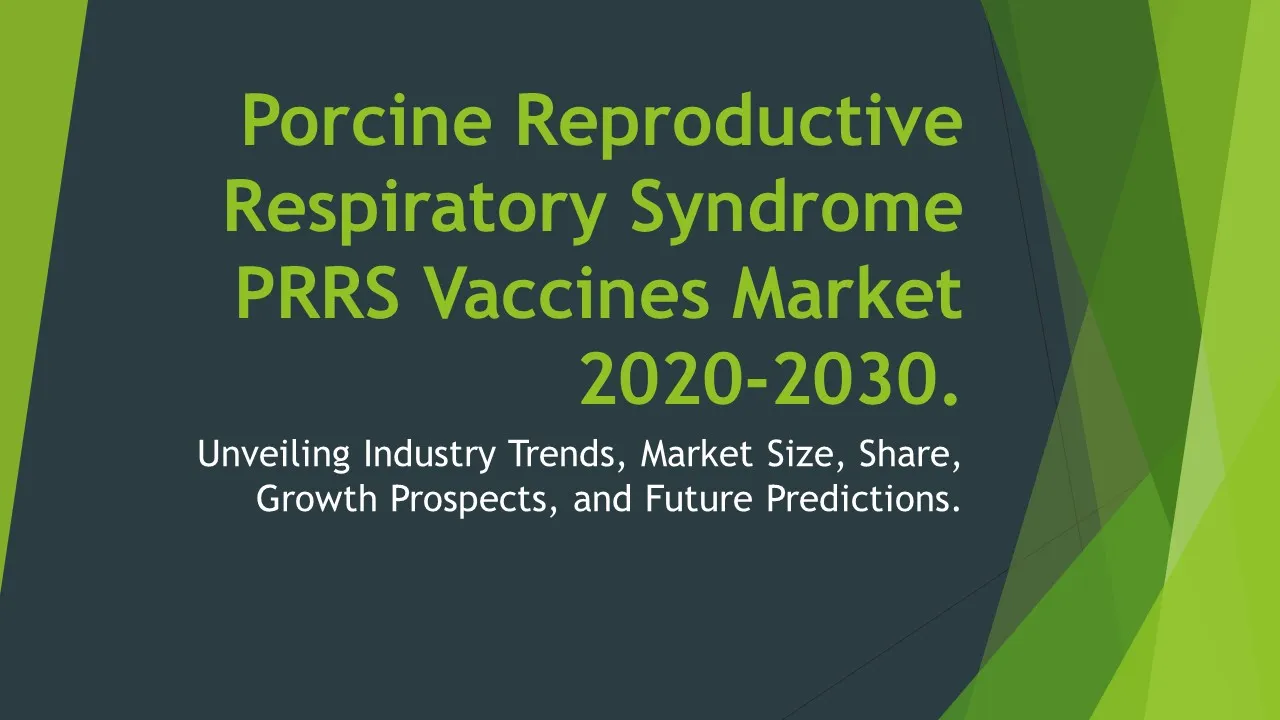Mannitol Injection
Mannitol Injection Market Segments - by Product Type (Osmotic Diuretics, Intravenous Diuretics, Oral Diuretics, Combination Diuretics, Loop Diuretics), Application (Brain Tumor, Cerebral Edema, Glaucoma, Kidney Failure, Others), Distribution Channel (Hospitals, Clinics, Retail Pharmacies, Online Pharmacies), Ingredient Type (Mannitol 20%, Mannitol 25%, Mannitol 30%, Mannitol 40%, Mannitol 50%), and Region (North America, Europe, Asia Pacific, Latin America, Middle East & Africa) - Global Industry Analysis, Growth, Share, Size, Trends, and Forecast 2025-2035
- Report Preview
- Table Of Content
- Segments
- Methodology
Mannitol Injection Market Outlook
The global Mannitol Injection market is poised for substantial growth, projected to reach approximately USD 3 billion by 2035, with a compound annual growth rate (CAGR) of around 7.5% during the forecast period from 2025 to 2035. This growth can be attributed to the increasing incidence of conditions such as cerebral edema and brain tumors, where mannitol injections are commonly utilized. Furthermore, an aging global population, coupled with rising health awareness and advances in pharmaceutical formulations, are significant factors driving the demand for mannitol injections. The growing prevalence of diseases requiring osmotic diuretics, combined with the expansion of healthcare facilities, is expected to bolster market growth. Additionally, the increasing number of surgical procedures and the rising acceptance of mannitol injections in critical care settings are anticipated to further fuel market expansion.
Growth Factor of the Market
One of the primary growth factors for the Mannitol Injection market is the rising prevalence of neurological disorders, particularly conditions that lead to increased intracranial pressure, such as traumatic brain injury and brain tumors. The effectiveness of mannitol as an osmotic diuretic in reducing this pressure has positioned it as a critical treatment in emergency medicine. Moreover, advances in formulation technology have improved the efficacy and safety profiles of mannitol injections, contributing to their widespread acceptance among healthcare providers. The expansion of healthcare infrastructure, especially in emerging economies, is also a critical factor, as it facilitates increased accessibility to essential medications like mannitol. Regulatory approvals and clinical advancements related to mannitol use in various applications, such as glaucoma and kidney failure, are expected to further enhance market prospects. Additionally, growing awareness regarding the therapeutic benefits of mannitol in critical care settings is driving its adoption, paving the way for sustained market growth.
Key Highlights of the Market
- The Mannitol Injection market is expected to reach USD 3 billion by 2035, with a CAGR of 7.5%.
- Cerebral edema and brain tumors are the primary applications driving market demand.
- Increased healthcare spending in emerging economies is expected to boost market growth.
- Technological advancements in formulation are improving the safety and efficacy of mannitol injections.
- The rising prevalence of chronic diseases and surgical procedures is increasing the demand for osmotic diuretics.
By Product Type
Osmotic Diuretics:
Osmotic diuretics, such as mannitol, are fundamental in the management of increased intracranial pressure and renal failure. These substances work by promoting diuresis through osmotic mechanisms, which draw water into the renal tubules and prevent its reabsorption. The growing incidence of conditions requiring rapid fluid removal, especially in critical care and neurology, is propelling the demand for osmotic diuretics. Additionally, their use in various surgical procedures, where maintaining fluid balance is essential, is further contributing to market growth. As healthcare providers increasingly recognize the importance of osmotic diuretics in managing complex medical conditions, the segment is expected to see significant expansion.
Intravenous Diuretics:
Intravenous diuretics are a key component of acute medical care, utilized for immediate intervention in patients suffering from fluid overload, especially in emergency settings. Mannitol, when administered intravenously, acts quickly to reduce intracranial pressure and is crucial in treating cerebral edema and other critical conditions. The efficiency of intravenous diuretics in delivering rapid results has made them indispensable in hospitals and emergency departments, thereby driving the demand for this product type. The segment's growth is further supported by an increase in surgeries and other invasive procedures where rapid diuresis is essential, and the overall improvement in emergency care delivery systems.
Oral Diuretics:
Oral diuretics serve as an important alternative for long-term management of fluid retention and hypertension. While mannitol is predominantly known for its intravenous applications, its oral formulations are gaining traction, particularly for outpatient management of chronic conditions. The convenience of oral administration and the ongoing need for effective long-term treatments are pivotal in driving this segment of the market. Furthermore, the increasing prevalence of hypertension and heart failure among the aging population is expected to further enhance the growth of oral diuretics, as healthcare providers seek effective solutions for long-term patient management.
Combination Diuretics:
Combination diuretics, which may include mannitol along with other diuretics, are gaining popularity for their synergistic effects in managing complex fluid retention scenarios. This approach allows for lower doses of each agent while maximizing therapeutic effects, thus minimizing potential side effects. The rise in polypharmacy, especially among older adults, is contributing to the acceptance of combination therapies in clinical practice. The growth of this segment is also propelled by ongoing research highlighting the benefits of multi-drug regimens in treating resistant forms of hypertension and fluid overload, leading to an increased focus on combination diuretics in therapeutic guidelines.
Loop Diuretics:
Loop diuretics, though not synonymous with mannitol, are frequently discussed in the context of osmotic diuretics due to their shared applications in acute care settings. These diuretics are essential in managing acute heart failure and are often used in conjunction with mannitol to achieve optimal fluid management. The enhanced diuretic effect provided by loop diuretics can complement the action of mannitol, particularly in patients requiring immediate intervention. The growing awareness of the need for effective diuretic strategies in acute care settings is likely to bolster the demand for loop diuretics, contributing to the overall growth of the market.
By Application
Brain Tumor:
Brain tumors often result in increased intracranial pressure, and mannitol is commonly used as a therapeutic agent to alleviate this condition. The ability of mannitol to draw fluid out of brain tissue and reduce swelling is critical in managing patients undergoing surgery or those receiving radiation therapy. As the incidence of brain tumors continues to rise globally, driven by factors such as environmental influences and genetic predispositions, the demand for effective treatments like mannitol injection is expected to grow. Ongoing research into the efficacy of mannitol in conjunction with other therapeutic modalities is further solidifying its role in the management of brain tumors.
Cerebral Edema:
Cerebral edema, characterized by excess fluid accumulation in the brain, can arise from various pathological processes, including trauma, infection, and tumors. Mannitol's osmotic properties make it particularly effective in reducing this condition, leading to its widespread use in emergency and critical care settings. The increasing incidence of head injuries and stroke globally has positioned cerebral edema as a significant area of concern for healthcare providers, thereby driving market growth for mannitol. The emphasis on timely intervention and improved outcomes in critical care is likely to enhance the adoption of mannitol injections for managing cerebral edema effectively.
Glaucoma:
In the management of glaucoma, mannitol is utilized to reduce intraocular pressure rapidly, especially in acute situations. The effectiveness of mannitol in drawing fluid away from the eye makes it a crucial option for healthcare providers treating patients with acute glaucoma attacks. With the prevalence of glaucoma increasing globally, particularly among the aging population, there is a growing demand for effective treatments that can provide rapid relief. The ongoing research into the application of mannitol in various glaucoma treatment protocols is expected to further enhance its market presence, making it a focal point for both clinicians and pharmaceutical companies.
Kidney Failure:
Mannitol plays a significant role in the management of acute kidney failure, where its diuretic effects can help maintain urine output and prevent complications associated with renal failure. The increase in chronic kidney diseases globally highlights a crucial need for effective treatments that can manage and mitigate the progression of kidney-related issues. Hospitals and healthcare providers are increasingly turning to mannitol for its ability to promote diuresis while also providing cytoprotective effects in the kidneys. The intersection of rising kidney failure cases and a growing emphasis on innovative treatment options is expected to contribute significantly to the market's growth trajectory.
Others:
This category encompasses various additional applications of mannitol injections, including its usage in managing conditions such as pulmonary edema and preventing renal impairment during high-risk surgical procedures. The versatility of mannitol as a therapeutic agent makes it applicable in numerous clinical scenarios, thereby enhancing its overall market appeal. The ongoing exploration of mannitol's potential benefits in diverse medical conditions underscores its importance in contemporary medicine, driving a steady demand across various healthcare settings. This segment's growth is further supported by continuous research and development efforts aimed at expanding the clinical indications for mannitol injections beyond traditional uses.
By Distribution Channel
Hospitals:
The hospital segment is the largest channel for the distribution of mannitol injections, driven by the high volume of acute cases requiring immediate medical intervention. Hospitals are primary providers of critical care and emergency services, where mannitol's rapid action is essential for treating conditions such as cerebral edema and acute kidney failure. The increasing number of hospital admissions due to chronic diseases and the rise in surgical procedures are driving the demand for mannitol in these settings. Furthermore, hospitals often have established supply chains and partnerships with pharmaceutical manufacturers, ensuring consistent availability of essential medications like mannitol injections.
Clinics:
Clinics are an essential distribution channel for mannitol injections, particularly in outpatient care settings. The growing trend of treating patients in ambulatory care settings has led to an increased demand for effective medications that can be administered conveniently. Clinics that focus on specialized care, such as neurology and ophthalmology, are particularly pivotal in the distribution of mannitol injections, given their relevance in treating conditions like glaucoma and cerebral edema. As healthcare shifts towards more patient-centered approaches, clinics are likely to play a larger role in the administration of mannitol, thus contributing to market growth.
Retail Pharmacies:
Retail pharmacies serve as an important access point for mannitol injections, particularly for patients requiring ongoing management of chronic conditions or follow-up care after hospital discharge. The convenience of obtaining medications from local pharmacies enhances patient adherence to prescribed treatments. Additionally, the growing trend of self-management among patients with chronic diseases has led to increased demand for accessible medications like mannitol. Retail pharmacies also collaborate with healthcare providers to ensure that patients receive comprehensive care, further solidifying their role in the distribution of mannitol injections.
Online Pharmacies:
The rise of e-commerce has transformed the pharmaceutical distribution landscape, with online pharmacies becoming increasingly popular among consumers seeking convenient access to medications. The COVID-19 pandemic accelerated this trend, leading to an increased acceptance of online healthcare solutions. Online pharmacies provide a platform for patients to purchase mannitol injections without the need for in-person visits, catering to those with mobility issues or those living in remote areas. As the market continues to evolve, the online pharmacy segment is expected to grow, driven by consumer demand for convenience and the ability to compare prices and services easily.
By Ingredient Type
Mannitol 20%:
Mannitol 20% is commonly used for various medical applications, particularly in the treatment of cerebral edema and other conditions requiring osmotic diuresis. The 20% concentration provides a balanced approach, delivering effective results while minimizing potential side effects. This formulation is particularly favored in hospital settings for its versatility and efficacy. As the prevalence of conditions necessitating mannitol treatment continues to rise, the demand for Mannitol 20% is expected to remain strong, supported by ongoing clinical research highlighting its benefits.
Mannitol 25%:
The 25% formulation of mannitol is often employed in more acute medical scenarios, where stronger osmotic effects are required to manage elevated intracranial pressure or renal failure. The increased concentration allows for more rapid fluid shifts, making it a critical choice in emergency medicine. With a rise in emergency department visits due to neurological and renal emergencies, the market for Mannitol 25% is likely to expand significantly in the coming years. The growing acceptance of higher concentration formulations is reflective of a broader trend toward optimizing therapeutic interventions in critical care.
Mannitol 30%:
Mannitol 30% is utilized in specialized medical scenarios, particularly in neurology and surgery. This formulation is often favored for its potent osmotic effects, which are particularly beneficial in managing severe cases of cerebral edema or during complex neurosurgical procedures. The use of Mannitol 30% reflects a trend towards higher concentrations for specific patient populations, particularly those requiring rapid and effective management of increased intracranial pressure. As awareness of its benefits grows, this ingredient type is expected to see increased demand in clinical practice.
Mannitol 40%:
Mannitol 40% represents a high-concentration option used primarily in intensive care settings where rapid osmotic effects are necessary for patient stability. This formulation allows for a quick reduction in intracranial pressure, making it essential in managing acute neurological conditions. The increasing incidence of traumatic brain injuries and the need for effective critical care solutions are likely to drive the market for Mannitol 40%. As healthcare continues to prioritize rapid intervention, the use of high-concentration formulations will likely expand.
Mannitol 50%:
Mannitol 50%, being the highest concentration available, is reserved for extremely critical situations where immediate and potent osmotic effects are essential. This formulation is primarily utilized in intensive care units for managing life-threatening conditions involving severe cerebral edema or renal failure. The ability to achieve rapid diuresis with minimal volume makes Mannitol 50% a vital tool for healthcare providers. As the complexity of critical care increases and the need for rapid-response medications becomes more pronounced, the demand for Mannitol 50% is expected to grow, particularly among specialized healthcare facilities.
By Region
The North American region is anticipated to dominate the Mannitol Injection market, accounting for approximately 45% of the total market share by 2035. The United States is the largest contributor to this market, driven by a high prevalence of neurological disorders and a well-established healthcare infrastructure. Additionally, ongoing advancements in medical technology and increasing research activities related to mannitol applications are further propelling growth in this region. The CAGR for North America is estimated to be around 7.8%, attributed to the rising healthcare expenditure and continuous innovations in therapeutic formulations.
In Europe, the Mannitol Injection market is expected to exhibit considerable growth, holding a market share of around 30% by 2035. Key countries such as Germany, France, and the UK are leading contributors to this segment, driven by an increasing focus on critical care and advancements in healthcare facilities. The growing geriatric population, coupled with an increase in chronic diseases that require effective management strategies, is expected to boost the demand for mannitol injections. The European market is projected to grow at a CAGR of approximately 6.9%, reflecting a rising emphasis on effective treatment options in emergency medicine.
Opportunities
The Mannitol Injection market presents significant opportunities, particularly in emerging economies where healthcare infrastructure is rapidly developing. As these regions experience an increase in health awareness and a growing population, the demand for effective medical treatments is expected to rise. Enhanced investments in healthcare facilities, particularly hospitals and clinics, will facilitate greater access to essential medications, including mannitol injections. Additionally, ongoing research and clinical trials exploring new applications and formulations of mannitol can lead to broader acceptance and usage of this therapeutic agent in various medical fields. This is particularly relevant in critical care settings where innovative treatment options are continually being sought to improve patient outcomes. The potential for mannitol to be incorporated into novel treatment regimens also signifies a promising avenue for market growth.
Furthermore, the rising prevalence of conditions that require osmotic diuretics, such as cerebral edema and acute kidney failure, provides an ongoing opportunity for the Mannitol Injection market. Collaborations between pharmaceutical companies and healthcare providers aimed at enhancing the awareness of mannitol’s benefits can foster greater adoption among clinicians. Additionally, the expansion of online pharmacy platforms presents a unique opportunity to reach a broader patient demographic, making it easier for patients to access mannitol injections. As more individuals become engaged in their health management, the demand for convenient and accessible treatment options will only increase, signaling a positive outlook for the overall market.
Threats
Despite the promising growth trajectory of the Mannitol Injection market, there are several threats that could hinder its expansion. One significant threat is the increasing competition from alternative diuretics and novel therapies that may offer similar or improved benefits without the adverse effects associated with mannitol. As the pharmaceutical industry continually innovates, the emergence of new treatment options could divert attention and resources away from traditional therapies like mannitol. Additionally, the potential for adverse reactions or complications associated with mannitol, particularly in certain patient populations, may deter healthcare providers from its use, thus impacting market demand. Stringent regulatory requirements and the need for extensive clinical trials for new formulations can also pose challenges for companies seeking to enter this market.
Moreover, economic factors such as fluctuations in healthcare budgets and government regulations can significantly impact the availability and pricing of mannitol injections. In regions where healthcare spending is limited, the adoption of advanced treatment options may be slowed, affecting overall market growth. The increasing focus on cost-effective treatments, particularly in public health systems, may also challenge the acceptance of mannitol if it is perceived as a more expensive option compared to alternatives. Addressing these threats will be crucial for stakeholders in the Mannitol Injection market to ensure sustained growth and success.
Competitor Outlook
- Fresenius Kabi AG
- Hospira, Inc. (a subsidiary of Pfizer Inc.)
- Baxter International Inc.
- Hikma Pharmaceuticals PLC
- Par Pharmaceutical Companies, Inc.
- Amgen Inc.
- Eagle Pharmaceuticals, Inc.
- Sun Pharmaceutical Industries Ltd.
- Mylan N.V.
- Teva Pharmaceutical Industries Ltd.
- Otsuka Pharmaceutical Co., Ltd.
- Hannover Medical School
- Fresenius SE & Co. KGaA
- Guerbet Group
- Sagent Pharmaceuticals, Inc.
The competitive landscape of the Mannitol Injection market is characterized by a diverse range of pharmaceutical companies, each vying for market share through product innovation and strategic partnerships. Key players such as Fresenius Kabi AG and Baxter International Inc. have established themselves as leaders in the production of mannitol injections, leveraging their robust distribution networks and extensive research capabilities. These companies are focusing on enhancing their product offerings through the development of new formulations and improved delivery methods, aimed at improving patient outcomes and meeting the evolving needs of healthcare providers. The competition is further intensified by the entry of generic manufacturers, which are increasing accessibility to mannitol injections at lower prices, thereby reshaping the market dynamics.
Moreover, collaborations and partnerships among major players are becoming increasingly common as companies seek to enhance their market presence and expand their geographical reach. For instance, partnerships with hospitals and healthcare systems are essential for ensuring a steady supply of mannitol injections and for gathering clinical data that supports their efficacy and safety. Companies are also investing in marketing strategies that emphasize the clinical advantages of mannitol, targeting healthcare professionals to drive adoption in emergency and critical care settings. The development of educational programs aimed at healthcare providers further underscores the importance of creating awareness around the therapeutic benefits of mannitol, contributing to its market growth.
Looking at specific companies, Hospira, Inc., a subsidiary of Pfizer Inc., is known for its commitment to quality and safety in medication delivery, which has positioned it as a trusted provider of mannitol injections. By focusing on rigorous quality controls and compliance with regulatory standards, Hospira ensures that its products meet the highest industry benchmarks. Similarly, Baxter International Inc. has been at the forefront of innovation in intravenous therapies, continuously working on enhancing the formulation of mannitol to ensure better patient outcomes. Their extensive research and development efforts have led to improved product offerings that are specifically tailored to meet the needs of healthcare providers in acute care settings. This continuous focus on innovation, quality, and safety among leading companies is likely to shape the competitive landscape of the Mannitol Injection market in the years to come.
1 Appendix
- 1.1 List of Tables
- 1.2 List of Figures
2 Introduction
- 2.1 Market Definition
- 2.2 Scope of the Report
- 2.3 Study Assumptions
- 2.4 Base Currency & Forecast Periods
3 Market Dynamics
- 3.1 Market Growth Factors
- 3.2 Economic & Global Events
- 3.3 Innovation Trends
- 3.4 Supply Chain Analysis
4 Consumer Behavior
- 4.1 Market Trends
- 4.2 Pricing Analysis
- 4.3 Buyer Insights
5 Key Player Profiles
- 5.1 Amgen Inc.
- 5.1.1 Business Overview
- 5.1.2 Products & Services
- 5.1.3 Financials
- 5.1.4 Recent Developments
- 5.1.5 SWOT Analysis
- 5.2 Mylan N.V.
- 5.2.1 Business Overview
- 5.2.2 Products & Services
- 5.2.3 Financials
- 5.2.4 Recent Developments
- 5.2.5 SWOT Analysis
- 5.3 Guerbet Group
- 5.3.1 Business Overview
- 5.3.2 Products & Services
- 5.3.3 Financials
- 5.3.4 Recent Developments
- 5.3.5 SWOT Analysis
- 5.4 Fresenius Kabi AG
- 5.4.1 Business Overview
- 5.4.2 Products & Services
- 5.4.3 Financials
- 5.4.4 Recent Developments
- 5.4.5 SWOT Analysis
- 5.5 Fresenius SE & Co. KGaA
- 5.5.1 Business Overview
- 5.5.2 Products & Services
- 5.5.3 Financials
- 5.5.4 Recent Developments
- 5.5.5 SWOT Analysis
- 5.6 Hannover Medical School
- 5.6.1 Business Overview
- 5.6.2 Products & Services
- 5.6.3 Financials
- 5.6.4 Recent Developments
- 5.6.5 SWOT Analysis
- 5.7 Baxter International Inc.
- 5.7.1 Business Overview
- 5.7.2 Products & Services
- 5.7.3 Financials
- 5.7.4 Recent Developments
- 5.7.5 SWOT Analysis
- 5.8 Hikma Pharmaceuticals PLC
- 5.8.1 Business Overview
- 5.8.2 Products & Services
- 5.8.3 Financials
- 5.8.4 Recent Developments
- 5.8.5 SWOT Analysis
- 5.9 Eagle Pharmaceuticals, Inc.
- 5.9.1 Business Overview
- 5.9.2 Products & Services
- 5.9.3 Financials
- 5.9.4 Recent Developments
- 5.9.5 SWOT Analysis
- 5.10 Sagent Pharmaceuticals, Inc.
- 5.10.1 Business Overview
- 5.10.2 Products & Services
- 5.10.3 Financials
- 5.10.4 Recent Developments
- 5.10.5 SWOT Analysis
- 5.11 Otsuka Pharmaceutical Co., Ltd.
- 5.11.1 Business Overview
- 5.11.2 Products & Services
- 5.11.3 Financials
- 5.11.4 Recent Developments
- 5.11.5 SWOT Analysis
- 5.12 Par Pharmaceutical Companies, Inc.
- 5.12.1 Business Overview
- 5.12.2 Products & Services
- 5.12.3 Financials
- 5.12.4 Recent Developments
- 5.12.5 SWOT Analysis
- 5.13 Sun Pharmaceutical Industries Ltd.
- 5.13.1 Business Overview
- 5.13.2 Products & Services
- 5.13.3 Financials
- 5.13.4 Recent Developments
- 5.13.5 SWOT Analysis
- 5.14 Teva Pharmaceutical Industries Ltd.
- 5.14.1 Business Overview
- 5.14.2 Products & Services
- 5.14.3 Financials
- 5.14.4 Recent Developments
- 5.14.5 SWOT Analysis
- 5.15 Hospira, Inc. (a subsidiary of Pfizer Inc.)
- 5.15.1 Business Overview
- 5.15.2 Products & Services
- 5.15.3 Financials
- 5.15.4 Recent Developments
- 5.15.5 SWOT Analysis
- 5.1 Amgen Inc.
6 Market Segmentation
- 6.1 Mannitol Injection Market, By Application
- 6.1.1 Brain Tumor
- 6.1.2 Cerebral Edema
- 6.1.3 Glaucoma
- 6.1.4 Kidney Failure
- 6.1.5 Others
- 6.2 Mannitol Injection Market, By Product Type
- 6.2.1 Osmotic Diuretics
- 6.2.2 Intravenous Diuretics
- 6.2.3 Oral Diuretics
- 6.2.4 Combination Diuretics
- 6.2.5 Loop Diuretics
- 6.3 Mannitol Injection Market, By Ingredient Type
- 6.3.1 Mannitol 20%
- 6.3.2 Mannitol 25%
- 6.3.3 Mannitol 30%
- 6.3.4 Mannitol 40%
- 6.3.5 Mannitol 50%
- 6.4 Mannitol Injection Market, By Distribution Channel
- 6.4.1 Hospitals
- 6.4.2 Clinics
- 6.4.3 Retail Pharmacies
- 6.4.4 Online Pharmacies
- 6.1 Mannitol Injection Market, By Application
7 Competitive Analysis
- 7.1 Key Player Comparison
- 7.2 Market Share Analysis
- 7.3 Investment Trends
- 7.4 SWOT Analysis
8 Research Methodology
- 8.1 Analysis Design
- 8.2 Research Phases
- 8.3 Study Timeline
9 Future Market Outlook
- 9.1 Growth Forecast
- 9.2 Market Evolution
10 Geographical Overview
- 10.1 Europe - Market Analysis
- 10.1.1 By Country
- 10.1.1.1 UK
- 10.1.1.2 France
- 10.1.1.3 Germany
- 10.1.1.4 Spain
- 10.1.1.5 Italy
- 10.1.1 By Country
- 10.2 Asia Pacific - Market Analysis
- 10.2.1 By Country
- 10.2.1.1 India
- 10.2.1.2 China
- 10.2.1.3 Japan
- 10.2.1.4 South Korea
- 10.2.1 By Country
- 10.3 Latin America - Market Analysis
- 10.3.1 By Country
- 10.3.1.1 Brazil
- 10.3.1.2 Argentina
- 10.3.1.3 Mexico
- 10.3.1 By Country
- 10.4 North America - Market Analysis
- 10.4.1 By Country
- 10.4.1.1 USA
- 10.4.1.2 Canada
- 10.4.1 By Country
- 10.5 Mannitol Injection Market by Region
- 10.6 Middle East & Africa - Market Analysis
- 10.6.1 By Country
- 10.6.1.1 Middle East
- 10.6.1.2 Africa
- 10.6.1 By Country
- 10.1 Europe - Market Analysis
11 Global Economic Factors
- 11.1 Inflation Impact
- 11.2 Trade Policies
12 Technology & Innovation
- 12.1 Emerging Technologies
- 12.2 AI & Digital Trends
- 12.3 Patent Research
13 Investment & Market Growth
- 13.1 Funding Trends
- 13.2 Future Market Projections
14 Market Overview & Key Insights
- 14.1 Executive Summary
- 14.2 Key Trends
- 14.3 Market Challenges
- 14.4 Regulatory Landscape
Segments Analyzed in the Report
The global Mannitol Injection market is categorized based on
By Product Type
- Osmotic Diuretics
- Intravenous Diuretics
- Oral Diuretics
- Combination Diuretics
- Loop Diuretics
By Application
- Brain Tumor
- Cerebral Edema
- Glaucoma
- Kidney Failure
- Others
By Distribution Channel
- Hospitals
- Clinics
- Retail Pharmacies
- Online Pharmacies
By Ingredient Type
- Mannitol 20%
- Mannitol 25%
- Mannitol 30%
- Mannitol 40%
- Mannitol 50%
By Region
- North America
- Europe
- Asia Pacific
- Latin America
- Middle East & Africa
Key Players
- Fresenius Kabi AG
- Hospira, Inc. (a subsidiary of Pfizer Inc.)
- Baxter International Inc.
- Hikma Pharmaceuticals PLC
- Par Pharmaceutical Companies, Inc.
- Amgen Inc.
- Eagle Pharmaceuticals, Inc.
- Sun Pharmaceutical Industries Ltd.
- Mylan N.V.
- Teva Pharmaceutical Industries Ltd.
- Otsuka Pharmaceutical Co., Ltd.
- Hannover Medical School
- Fresenius SE & Co. KGaA
- Guerbet Group
- Sagent Pharmaceuticals, Inc.
- Publish Date : Jan 21 ,2025
- Report ID : PH-65869
- No. Of Pages : 100
- Format : |
- Ratings : 4.5 (110 Reviews)









